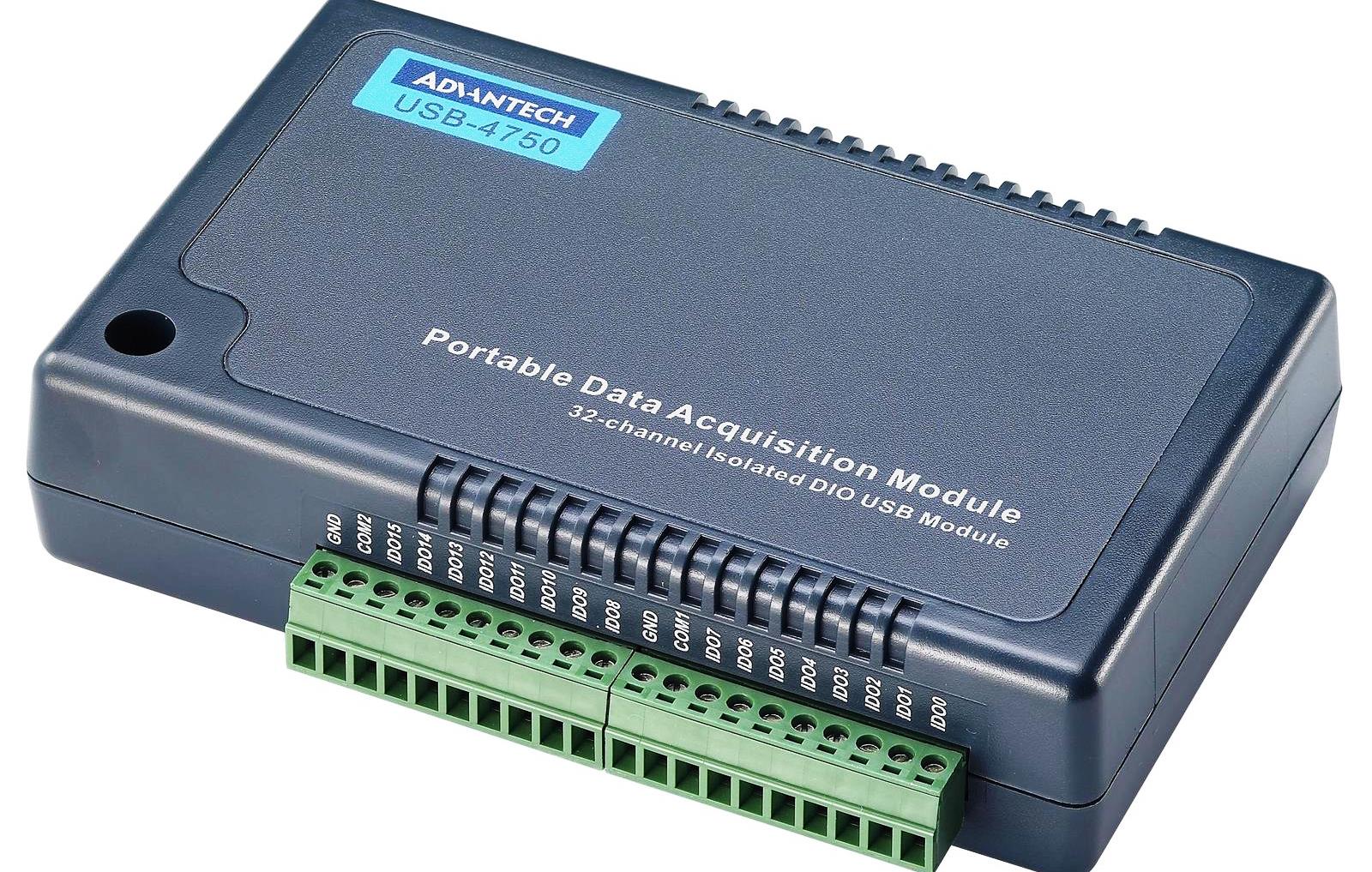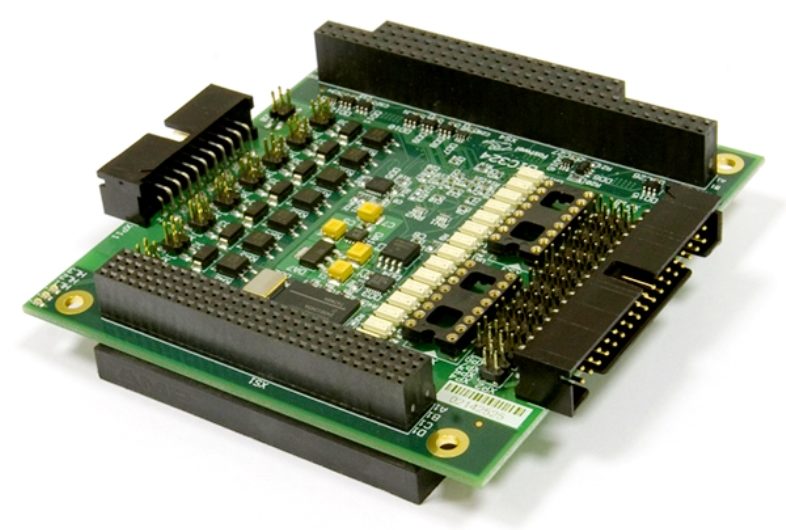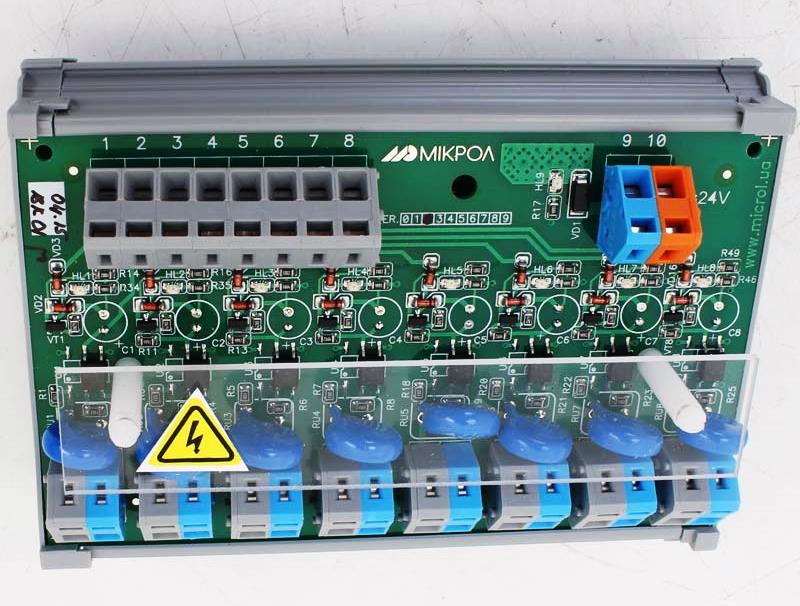Rating of the best analog and discrete I/O modules for 2022

What is the essence of automation? The fact that the entire flow of information is transmitted from primary sources (sensors). It is assumed that the incoming data must correspond to reality, present information in real time, which implies a high update rate. Only in this way will it be possible to exercise effective control over the control object in order to prevent false alarms and emergencies. Analog and discrete I/O modules can help with this.
Content
What are these devices for?

To connect a remote access device, which is used to accumulate a huge amount of data, a number of auxiliary mechanisms (actuators) are used. How does the unit work? It measures the received analog and discrete indicators, which convert the data to the controller, as well as the control device, server (cloud), PC and other types of equipment.
Key characteristics of input-output nodes:
- Digital communication interface (CAN, Ethernet, RS - 485 and so on).
- Options for supported communication protocols (ProFibus, ModBus and others).
What are

Input-output nodes are:
| Kinds | Description |
|---|---|
| Discrete | The following functionality is provided: receiving and converting received commands, including discrete ones, which are then sent to a common grid. It is done by using one of the included protocols, which is connected immediately after the appropriate command is received. |
| Analog | Carries out collection and subsequent processing of the received information of analog type. After that, the translation is carried out to the main server, which decrypts according to the current protocol. |
It is worth paying attention to the fact that in each of the cases under consideration, the incoming command will be indicated within one of the ranges:
- Discrete - emitted signal range from 10 V to 28 V, used as an NPN / PNP transistor with an open collector.
- Analog - emitted signal range - 0 mA to 20 mA, 4 mA to 20 mA, voltage signal allowed in the range - 0 V to 10 V, 0 V to 5 V.
Under certain circumstances, it is necessary to equip specialized ports that will help receive a signal from a thermal resistance or thermocouple.
Discrete type modules assume the presence of a logical command in a certain range, while analog ones are consistent with their electromagnetic indicators, comparable to the actuators that are controlled by the system. The input nodes receive common bus signals through a specific protocol, after which they are transmitted to the output lines.
It should be noted that both all channels of the modules and the supply circuits are galvanically isolated from the common bus.
The applied nodes can work with one of the many communication protocols: Modbus, DeviceNet, RTU. The principle of the exchange of information protocols between the node and the controller is as follows: master and slave, where the module is the slave. The device processor, having requested data from all channels and having fixed their status, waits for the initiating command from the PLC to receive and transmit this information.
There are popular models where the exchange command initiates the input node itself, which received information about the channel state change. There is a direct data transfer from the node to the PLC. The processor is able to perform additional functions, such as:
- calibrate and linearize sensor readings;
- control the supply voltage;
- carry out diagnostics.
Equipment modifications
The best manufacturers produce models in several modifications. They differ in functionality, average price, capabilities, technical characteristics, material of manufacture of components, interaction with the PLC through a common bus. Let's look at each option in more detail.
Discrete ARD Series

Data exchange takes place using the DeviceNet protocol. A universal model that allows you to use different communication procedures, including change (COS). There is a multi-byte signal input. What it is? First of all, the optimal solution for remote I / O for automated control systems. The series includes standard modules and instances with special connectors so that it is possible to connect sensors.
There are eight input-output channels of discrete signals with an open PNP- or NPN-collector. Channels have optical isolation from the source of data or load. There is also protection against current overload, when the polarity of the supply voltage is reversed, from too high voltage.
All equipment support the DeviceNet protocol. It is possible to connect three additional expansion nodes to the main module. Additional devices are able to work in DeviceNet / ModBus networks. This product allows you to:
- 1-byte output / input - read and write in the format of 1 byte;
- 8-byte output/input - read and write data in a multi-byte format.
At the same time, the speed of information transfer directly depends on the remoteness of the node from the leading device. As a result, the following picture is obtained:
- remoteness of half a kilometer - 125 kbps;
- distance 250 meters - 250 kbps;
- distance up to one hundred meters - 500 kbps.
The weight of the modules, depending on the brand, ranges from 64 to 59 grams. There are such additional features:
- able to determine the characteristics of connected devices;
- can control the voltage in the network, identify the maximum, minimum and current indicator, establish control over the voltage level;
- set the number of expansion nodes.
The presence of a special e-Con connector in the node for connecting sensors allows you to make the connection quick and hassle-free, while saving free space during installation.
An overview of the technical characteristics will show the following picture:
- Voltage range from 12 to 28 V DC.
- Isolation - galvanic optocoupler isolation.
- The maximum power consumption is 3 W.
- COM - 8 channels.
- Vibration index - from 1.5 mm at a frequency of 10 - 55 Hz.
- Permissible temperature - from -10 degrees to +50 degrees.
- Humidity index - 35 - 85%.
- Degree of protection - IP2
- Production material - polycarbonate.
- There is protection against overcurrent, overvoltage, polarity reversal.
- Mounted on bolts or DIN rail.
Discrete ARM series

For data exchange, the Modbus RTU protocol is used, and it is possible to perform only one procedure: to carry out a cyclic poll (POLL) and 1-byte input of information. The model allows you to expand the number of ports for the output and input signals of the PLC, operator panels or PC.
The number of channels is 8 pieces, which are optically isolated from the load and from the signal source, as well as from power surges, polarity reversal, and so on. There is an automatic baud rate setting that matches the speed of the host equipment (PC, PLC, etc.). The maximum number of connections of such basic modules to the master device is 63. Connection of additional expansion nodes for operation in the DeviceNet / ModBus network is provided.
Very compact product with a width of 26 mm. Mounted on a DIN rail or panel with bolts. Connecting sensors is quick and easy with the e-Con connectors. Able to work at a considerable distance - up to 800 m.In terms of their parameters, they are almost similar to the previous version.
ARIO

Compact device that includes:
- interface node (able to support a large number of Modbus RTU, EtherNet/IP, ProfiNet, EtherCat, CC-Link, ModBus TCP, Devicenet protocols) to communicate with industrial HMIs and PLCs, as well as PCs;
- power node;
- digital and analog input-output devices.
It can combine 64 input-output devices at the same time and use them for control. The equipment is equipped with plug-in terminals that allow you to quickly connect external elements. Installation of a design is carried out on a DIN rail. The ability to disable the terminal block and the control unit provides the ability to carry out maintenance of the system without turning off the information exchange channel and the power source. The design can be installed with insufficient free space, since its small dimensions allow this to be done without much effort and ingenuity.
Products are used in the following areas:
- automotive industry in the presence of machine assembly lines;
- various production sites where it became necessary to collect and process information in automatic mode;
- in order to create a single process for managing and dispatching a distributed industrial facility;
- if it is necessary to automate remote technological production.
To determine the best product, you need to study the rating of high-quality models, determine the selection criteria, clarify their advantages and disadvantages, as well as the average price, and understand their features. The advantages of the ARIO module include:
- Convenient installation. Connection of conductors is carried out quickly enough.You can do it yourself without resorting to the use of additional tools. You don't even need step by step instructions.
- The presence of various types of devices and modular construction. This feature makes it possible to make structural changes to the device, depending on the needs of the user.
- Self-diagnosis. The system is able to check offline the functioning of individual elements.
- Hot shutdown function. It is possible to change the units that have become unusable without disconnecting the equipment from the power source.
- Compactness. The small dimensions of certain components make it possible to save installation space.
- Flexibility of use. Works with a large number of exchange protocols and various types of modules.
- The presence of a DIN rail guarantees a reliable and high-quality fastening.
- There are indicators of the operating status of individual elements.
Scope of use

The scope of devices of this type, provided that we are talking about designs involving the use of such devices, are as follows:
- local automated and high-tech installations of a remote type;
- dispatching devices and high-performance sets of distribution equipment, which are controlled by remote access;
- where there are systems that collect and transmit data;
- high-tech sets including assembly lines, conveyors, machine groups and many other elements, as well as automated companies with production plants.
How to choose and where to buy products
When it becomes necessary to purchase modules, a lot of questions arise, including which company is better to choose a product.There are many popular models, manufacturers are trying to please the most meticulous users. Smart options cost a lot of money, branded options are not cheap.
Which brand is better to buy depends on the preferences of the user and the scope of the device. Customer reviews are important and worth paying attention to. It is better not to make mistakes when choosing, since the end result may be negative and the money will be wasted.
Before visiting specialized retail outlets or ordering a design online in an online store, you should listen to the recommendations of experts in this field and get practical advice from them. It is necessary not to miss the novelties of both Russian and foreign production. According to buyers, you can choose a quality product at a budget price. It is not possible to make such a device with your own hands, and there is no need for this. But you can install it without outside help.
Rating of the best analog and discrete I/O modules for 2022
Analog
TIP D 215

The four-channel module is based on the DAC 8775, has an integrated LM 5166 converter, which makes it possible to bring the power dissipation to 1 W. The device requires an input voltage of 1.5 to 40 V. It is able to regenerate 4 separate sources at the input, used to control the connection of peripherals. Its features include the presence of adaptive power control of the current outputs, as well as the indicator of the switched current of 4 - 20 mA for each channel.
How much does the product cost? The manufacturer offers his product at an agreed price, depending on the configuration.
- high reliability parameters;
- built-in diagnostic tools allow you to establish a short circuit and breaks;
- it is possible to monitor the temperature of the crystal;
- the watchdog timer controls the hang of the SPI bus;
- ideally responds to emergency situations;
- detects system problems at an early stage;
- reliable;
- highly functional;
- short response time;
- high efficiency;
- there are innovative self-learning opportunities.
- significant have not been established.
TIDA-01434

The products fall into the category of full-featured, complete analog input modules that meet today's requirements for efficiency and functionality, as well as channel density, in a moderate PCB size. Distinctive features - low power consumption and a wide range of operating temperatures. This design works on the basis of a DC / DC converter in Charge Pump mode. You can switch from single-channel to multi-channel mode without adjusting the main power parameters.
The main features of the product include:
- no need to connect additional strapping circuits;
- there is an external connection function;
- there is a bipolar analog power supply with Inverting Charge Pump;
- there are no inductors on board, so the height of the structure is not more than 3.5 mm;
- there is an isolated power supply and a high-precision sigma-delta analog-to-digital converter.
You can connect single or multi-channel analog inputs with bipolar input signals. Suitable for "channel-channel" devices and for inputs with group isolation.
The price of the goods is negotiable.
- the circuit uses an ISOW 7841 digital isolator;
- you can not include additional components in the circuit;
- high service life;
- small dimensions;
- convenient to use;
- made of high quality material.
- significant ones are missing.
MB 110

The product helps to measure analog signals with built-in analog inputs and convert the obtained indicators into physical values, in order to then transmit data via the RS-485 network. It has an exchange rate from 2400 to 115200 bps. Supported protocols: DCON, OBEH, ModBus RTU, Modbus ASCII. Main technical characteristics:
- power consumption - up to 6 VA;
- ADC bit depth - 16 bits;
- input polling time - up to 0.4 sec.;
- power supply - universal 24 V;
- degree of protection - IP20;
- fastening - on a DIN rail or to a wall;
- relative humidity - up to 80%;
- temperature limit - from -10 to +55 degrees.
The product can be purchased at a price of 5160 rubles.
- has an individual configuration for a separate entrance;
- universal food;
- protocol type is determined automatically;
- effectively diagnoses connected sensors;
- removable type terminal blocks equipped with captive screws;
- the firmware is constantly updated.
- not identified.
M-7013PD

Single-channel analog device with RTD, LED indication, Modbus/RTU and DCON. RS-485 type interface, there is a break detection system, there is a connector and screw terminals. Fairly high measurement accuracy - up to 0.05%. You can mount the device in two ways: using a DIN rail or directly to the wall.Power consumption - 1.2 W, input voltage in the range from +10 to +30 V, operating temperature - from -25 to +75 degrees.
The product can be purchased at a price of 16718 rubles.
- high reliability;
- solid assembly;
- durability;
- practicality;
- universal food.
- significant were not identified.
Discrete
MK 110

The device is made in order to control the built-in discrete CE by signals from the RS-485 network, which are used to connect actuating structures with discrete control, as well as to collect information from the discrete inputs of the modules and then transfer it to the network. The main feature is that it supports many protocols, including DCON and ModBus RTU. The exchange rate indicator ranges from 2400 to 115200 bps.
Main characteristics:
- input signal duration - up to 0.5 ms;
- input signal frequency - 1 kHz;
- input current - no more than 8.5 mA;
- power consumption - up to 12 VA;
- dimensions - 63 x 110 x 75 mm;
- degree of protection - IP 20;
- maximum humidity - up to 80%;
- ambient temperature - from -10 to +55 degrees.
Attaches to wall or DIN rail.
The average purchase price is 5760 rubles.
- is able to diagnose a break in the interface line and transfer the outputs to a safe state, which will be determined by the user himself;
- controls the liquid level by conductometric sensors;
- protocols are determined automatically;
- the firmware can be updated;
- supports cloud service;
- long service life;
- reliable assembly;
- small cost.
- significant ones are missing.
MU 110

The device controls the receipt of signals from the RS-485 network by means of built-in output elements, thanks to which actuating devices with discrete control are connected. Supports a large number of protocols: ModBus RTU, OBEH, DCON, Modbus ASCII, as well as the OwenCloud cloud service. Significant exchange rate: from 2400 to 115200 bps. The dimensions are small: 63 x 110 x 75 mm, degree of protection - IP20, permissible humidity - 80%, temperature regime - from -10 to +55 degrees. Two ways of fastening: to a wall or a DIN rail.
The average cost of goods is 5580 rubles.
- removable terminal blocks are equipped with screws that do not fall out;
- the protocol is set automatically;
- can detect a break in the interface;
- the firmware is updated automatically;
- the device is reliable and durable;
- high quality materials are used in the manufacture.
- significant have not been established.
MU 210

These models are developed and produced by manufacturers for the purpose of control by signals from the Internet through built-in discrete input elements, the main task of which is to connect actuators with discrete control. The exchange interface is a dual Internet with 10/100 Mbps, the exchange protocols used are Modbus TCP (allows you to make four simultaneous connections), SNMP and MQTT. The last two protocols are under development.
The Mx210 module is configured using a configurator that supports working with a group of modules. It provides the ability to have access to all parameters. The device is connected using the Ethernet or USB interface (via the microUSB connector).The use of USB does not require the use of an external power supply for the module.
Works in two modes:
- PWM signal generation;
- switching logic state.
Maximum voltage indicators:
- constant - 30 V;
- variable - 250 V.
The turn-on and turn-off time is minimal and reaches 15 ms. Operates at mains voltage from 10 to 48 V. Consumes no more than 6 watts of power. There is reverse polarity protection. Works with archive files, the maximum size of which does not exceed 2 kb. The product has dimensions of 42 x 124 x 83 mm, weighs only 0.4 kg, has an IP20 degree of protection, is mounted on a wall or DIN rail. The room temperature range for efficient operation is from -40 to +55 degrees. Relative humidity can reach from 10 to 95 percent.
The basic package includes the following components:
- module directly;
- warranty card and passport;
- quick start guide;
- power terminals 2EGTK - 5 - 02P - 14 in the amount of 1 piece;
- scotch cable - cord UTP 5u 150 mm;
- Ethernet plugs.
The average cost from the manufacturer is 7440 rubles.
- significant operating temperature range;
- long warranty period of 6 years;
- the ability to operate the outputs in the mode of generating PWM signals;
- the ability to work in the mode of generating a given number of pulses;
- the presence of a dual two-port Ethernet switch;
- supports OwenCloud cloud server;
- supports Ethernet Bypass technology, which makes it possible to transfer information between ports without losing connection with other modules in case of an emergency;
- effective;
- high precision;
- decent build quality;
- good value for money;
- with a long service life.
- there is no load break control.
Conclusion

I/O modules are the interface between the real world and the processor. Of course, the ideal picture looks like this: absolutely all indicators of measuring signals are concentrated in the processor in any time period. But it is not yet possible to achieve this, since there can be thousands of I / O channels from some devices, and the channels of the measurement plan are limited in bandwidth, so the measured values reach the process not when we want, but only at discrete times.
Several levels and options for polling the input channel have been developed and are being applied. The modern input design has its own microcontroller, due to which absolutely all channels are cyclically polled, followed by the direction of the received information to the buffer. If the automatic system assumes the use of only a few modular channels, then unused channels can be temporarily excluded from the polling process (masked). This will allow the system to work more quickly and efficiently.
Currently, the discrete I / O module is very popular, which can be in two states: off and on. Analog I/O uses thermometers, thermocouples, universal current and voltage signals, RTDs, and so on as signals.
new entries
Categories
Useful
Popular Articles
-

Top ranking of the best and cheapest scooters up to 50cc in 2022
Views: 131651 -

Rating of the best soundproofing materials for an apartment in 2022
Views: 127691 -

Rating of cheap analogues of expensive medicines for flu and colds for 2022
Views: 124519 -

The best men's sneakers in 2022
Views: 124033 -

The Best Complex Vitamins in 2022
Views: 121940 -

Top ranking of the best smartwatches 2022 - price-quality ratio
Views: 114980 -

The best paint for gray hair - top rating 2022
Views: 113395 -

Ranking of the best wood paints for interior work in 2022
Views: 110319 -

Rating of the best spinning reels in 2022
Views: 105330 -

Ranking of the best sex dolls for men for 2022
Views: 104367 -

Ranking of the best action cameras from China in 2022
Views: 102216 -

The most effective calcium preparations for adults and children in 2022
Views: 102011









